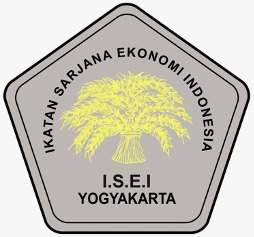Structural Transformation Patterns and Factors That Influenced: The Case In Indonesia
Setyo Tri Wahyudi, Department of Economics, Faculty of Economics and Business, Brawijaya University, Indonesia
Abstract
The purpose of this study is to determine the pattern of structural transformation and analyze the effect of per capita income, population, and human capital structural transformation in Indonesia. The research data uses data from three economic sectors, namely the agricultural, industrial, and service sectors in Indonesia from 1990-2019. The research analysis method is descriptive qualitative to see sectoral patterns and trends, while the quantitative analysis method uses the Chenery-Syrquin regression model approach. The findings in the study that there has been a structural transformation in Indonesia during the last three decades with the S-I-A pattern (agricultural service industry). The population has a positive and significant effect on the agricultural, industrial, and service sectors, while human capital has a significant positive effect on the industrial and service sectors. In conclusion, various factors influence structural transformation in different sectors in Indonesia.
Keywords
Full Text:
PDFReferences
Aba, F. X. L., Yussof, O. M., & Mohd, S. B. (2015). Analysis of Economic Structure in Poverty Eradication in The Province of East Nusa Tenggara Indonesia. Procedia - Social and Behavioral Sciences, 211, 81–88. https://doi.org/10.1016/j.sbspro.2015.11.013
Abdullah A, A. T., & Wasil, M. (2018). Pengaruh Transformasi Ekonomi Dari Sektor Pertanian Ke Sektor Industri Terhadap Pertumbuhan Ekonomi Di Indonesia. Jurnal Dinamika Ekonomi Pembangunan (JDEP), 1(1), 6–11.
Acemoglu, D., Johnson, S., & Robinson, J. A. (2001). The Colonial Origins of Comparative Development: An Empirical Investigation. The American Economic Review, 91(5), 1369–1401. https://doi.org/10.1257/aer.102.6.3077
Armah, B., & Baek, S. J. (2019). Prioritising interventions for sustainable structural transformation in Africa: a structural equation modelling approach. Review of Social Economy, 77(3), 297–325. https://doi.org/10.1080/00346764.2019.1602277
Astorga, A., Death, R., Death, F., Paavola, R., Chakraborty, M., & Muotka, T. (2014). Habitat heterogeneity drives the geographical distribution of beta diversity: The case of New Zealand stream invertebrates. Ecology and Evolution, 4(13), 2693–2702. https://doi.org/10.1002/ece3.1124
Baek, S. J. (2017). Is rising income inequality far from inevitable during structural transformation? A proposal for an augmented inequality dynamics. Journal of Economics and Political Aconomy, 4(3), 224–237. https://doi.org/10.31857/s020736760001432-4
Bresser-Pereira, L. C. (2012). Structuralist Macroeconomics and the New Developmentalism. Brazilian Journal of Political Economy, 32(3), 347–366. https://doi.org/10.1590/S0101-31572012000300001
Busse, M., Erdogan, C., & Mühlen, H. (2018). Structural transformation and its relevance for economic growth in Sub-Saharan Africa. Review of Development Economics, 23(1), 1–21. https://doi.org/10.1111/rode.12543
Creswell, J. W. (2016). Research Design Pendekatan Metode Kualitatif, Kuantitatif, dan Campuran (Edisi Keem). Pustaka Pelajar.
Dastidar, A. G. (2012). Income Distribution and Structural Transformation: Empirical Evidence from Developed and Developing Countries. Seoul Journal of Economics, 25(1).
Deutsch, J., & Silber, J. (2004). Measuring the Impact of Various Income Sources on the Link between Inequality and Development: Implications for the Kuznets Curve. Review of Development Economics, 8(1), 110–127. https://doi.org/10.1111/j.1467-9361.2004.00223.x
Elliott, D. R. (1998). Does Growth Cause Structural Transformation? Evidence from Latin America and the Caribbean. The Journal of Developing Areas, 32(2), 187–198.
Gemmell, N. (2007). Economic Development and Structural Change: The Role of the Service Sector. The Journal of Development Studies, 19(1), 37–66. https://doi.org/10.1080/00220388208421849
Haraguchi, N., & Rezonja, G. (2011). Emerging Patterns of Manufacturing Structural Change. Working Paper, No. 2011/43.
Herdianti, Y. M., Burhan, M. U., & Pratomo, D. S. (2015). Analisis Transformasi Struktur Ekonomi dan Perubahan Proporsi Tenaga Kerja Provinsi Jawa Timur 1998-2012. International Journal of Social and Local Economic Governance, 1(1), 68–74.
Hwa, E.-C. (1989). The Contribution of Agriculture to Economic Growth: Some Empirical Evidence. In The Balance between Industry and Agriculture in Economic Development (pp. 106–126). https://doi.org/10.1007/978-1-349-19746-0_5
Kaldor, N. (1957). A Model of Economic Growth. The Economic Journal, 67(268), 591–624. https://doi.org/10.3138/9781487586065-004
Karyasa, K. (2006). Perubahan Struktur Ekonomi Dan Kesempatan Kerja Serta Kualitas Sumberdaya Manusia Di Indonesia. SOCA: Socioeconomics of Agriculture and Agribusiness, 6(1), 1–21.
Kuznets, S. (1955). Economic Growth and Income Inequality. The American Economic Review, 45(1), 1–28. https://doi.org/10.1257/aer.99.2.i
Lin, J., & Chang, H. (2009). Should Industrial Policy in Developing Countries Conform to Comparative Advantage or Defy it? A Debate Between Justin Lin and Ha-Joon Chang. Development Policy Review, 27(5), 483–502.
Martorano, B., Park, D., & Sanfilippo, M. (2016). Catching-up, Structural Transformation, and Inequality: Industry-Level Evidence From Asia. Industrial and Corporate Change, 1–16. https://doi.org/10.1093/icc/dtw039
Mijiyawa, A. G. (2017). Drivers of Structural Transformation: The Case of the Manufacturing Sector in Africa. World Development, xx, 141–159. https://doi.org/10.1016/j.worlddev.2017.07.007
Myrdal, G. (1957). Economic Nationalism and Internationalism. In Australian Outlook (Vol. 11, Issue 4). https://doi.org/10.1080/00049915708565383
Nurkse, R. (1952). Some Internastional Aspects of the Problem of Economic Development. American Economic Association, 42(2), 571–583.
Paulina. (2017). Structure Changes, the Contribution of Sectors, Income Per Capita Indonesia in 1990 – 2014. Journal of Economics, Business & Accountancy Ventura, 19(3), 293–304. https://doi.org/10.14414/jebav.v19i3.758
Piketty, T. (1997). The Dynamics of the Wealth Distribution and the Interest Rate with Credit Rationing. Review of Economic Studies, 64, 173–189. https://doi.org/10.2307/2971708
Restuccia, D., & Rogerson, R. (2017). The Causes and Costs of Misallocation. Journal of Economic Perspectives, 31(3), 151–174. https://doi.org/10.1257/jep.31.3.151
Romer, P. M. (1990). Are Nonconvexities Important for Understanding Growth ? NBER Working Paper Series, 3271.
Romli, M. S., Hutagaol, M. P., & Priyarsono, D. S. (2016). Transformasi Struktural: Faktor-Faktor Dan Pengaruhnya Terhadap Disparitas Pendapatan Di Madura. Jurnal Ekonomi Dan Kebijakan Pembangunan, 5(1), 25–44. https://doi.org/10.29244/jekp.5.1.25-44
Roosmawarni, A., & Soekarnoto. (2015). Analisis Pertumbuhan Ekonomi Dan Transformasi Struktural Di Provinsi Jawa Timur Tahun 2000 - 2010. Jurnal Ekonomi Dan Bisnis, XXV(1).
Rosenstein-Rodan, P. . (1943). Problem of Industrialisation of Eastern and South-Eastern Europe. The Economic Journal, 53(210/211), 202–211.
Solow, R. M. (1956). A Contribution to the Theory of Economic Growth. The Quarterly Journal of Economic, 70(1), 65–94.
Sposi, M. (2015). Evolving Comparative Advantage, Sectoral Linkages, and Structural Change. In Federal Reserve Bank of Dallas, Globalization and Monetary Policy Institute Working Papers (Issue 231). https://doi.org/10.24149/gwp231
Święcki, T. (2017). Determinants of Structural Change. Review of Economic Dynamics, 24, 95–131. https://doi.org/10.1016/j.red.2017.01.007
Tarp, F., Arndt, C., Jensen, H. T., Robinson, S., & Heltberg, R. (2002). Facing the Development Challenge in Mozambique: An Cconomywide Perspective. In Research Report of the International Food Policy Research Institute Washington, D.C (Issue 126). https://doi.org/10.2499/0896291316rr126
Teignier, M. (2017). The Role of Trade in Structural Transformation. Journal of Development Economics, 1–53. https://doi.org/10.1016/j.jdeveco.2017.09.002
UNCTAD. (2016). Virtual Institute Teaching Material on Structural Transformation and Industrial Policy. In UNCTAD Virtual Institute.
Üngör, M. (2017). Productivity Growth and Labor Reallocation: Latin America versus East Asia. Review of Economic Dynamics, 1–33. https://doi.org/10.1016/j.red.2016.12.004
Vaulina, S., & Elida, S. (2014). Analisis Transformasi Struktural Ekonomi Di Kota Pekanbaru. Jurnal Dinamika Pertanian, XXIX(1 April 2014), 69–78.
Yunisvita. (2011). Transformasi Struktur Ketenagakerjaan dan Pertumbuhan Ekonomi Sumatera Selatan. JURNAL EKONOMI PEMBANGUNAN Volume 9, No. 2 Hal: 90 - 99, 9(2), 90–99.
DOI: https://doi.org/10.21831/economia.v19i1.36818
Refbacks
- There are currently no refbacks.
Archive, Citation & Indexing:
More archive, citation, & indexing...
This site is licensed under a Creative Commons Attribution 4.0 International License


















